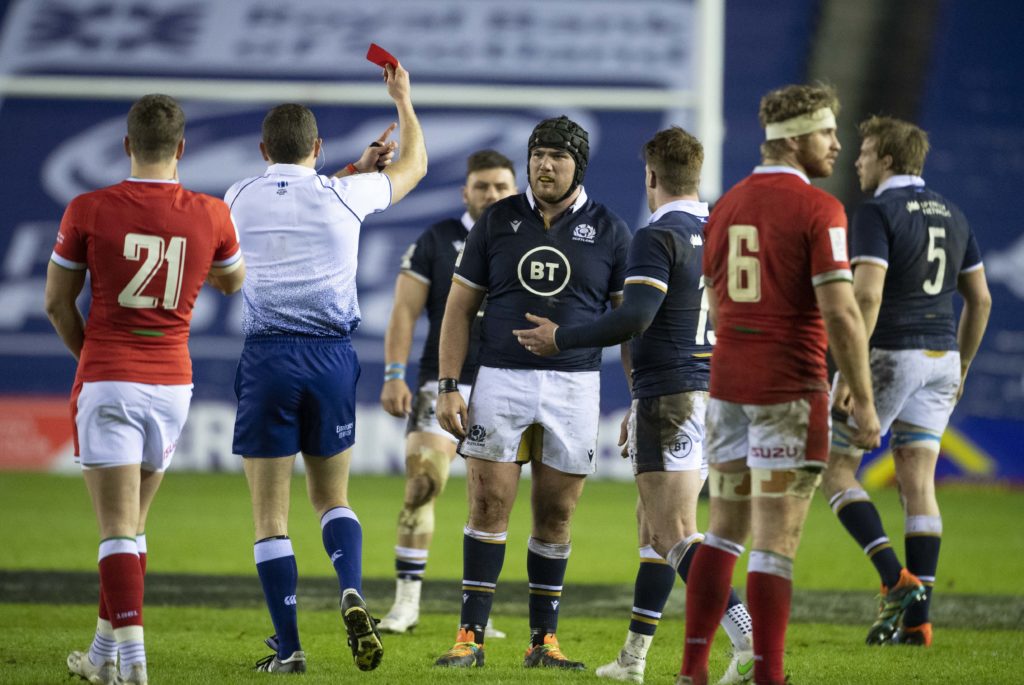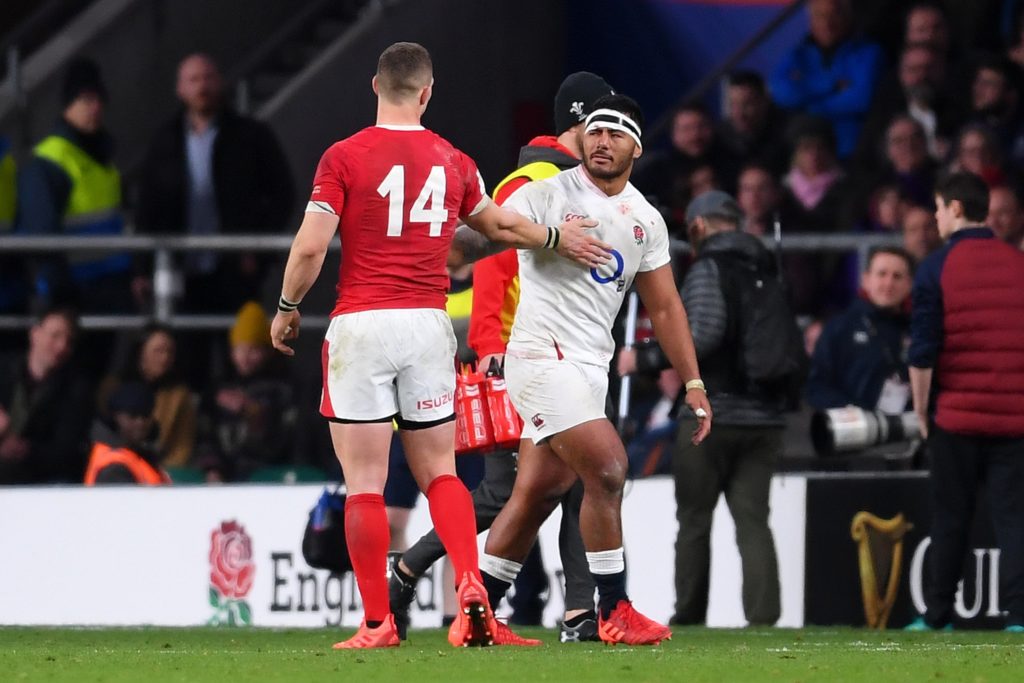World Rugby is now fighting an unwinnable war. The governing body’s campaign to lower tackling heights was once destined to be arguably the most effective and important decision to ever have been made by an institution notorious for its ability to invite everyone to a brewery and send them home sober.
Back in late 2016 when World Rugby issued tougher measures to deter contact with the head, there was unanimous support for their stance. It wasn’t just the intent that was being celebrated, but the practical means by which they wanted to go into battle.
The guidelines made sense. They were clear, strong but not militant and critically they allowed for the important distinction to be made between an act of reckless intent and an accidental collision.
This made perfect sense. This was the way referees could red or yellow card the head-hunting psychopaths out of the game. This was the way those with poor technique would be forced to improve, to learn how to drop their body heights in the tackle and hit the ball carrier lower.

This was how the players could feel safer, knowing that if a defender lost their composure or had a moment of madness or laziness and swung their arm high, they wouldn’t get away with it.
The ability for referees to use their judgement and determine whether an incident had been accidental – a consequence of actions beyond the defender’s control, was just as key to giving the players confidence.
This made perfect sense. This was the way referees could red or yellow card the head-hunting psychopaths out of the game. This was the way those with poor technique would be forced to improve, to learn how to drop their body heights in the tackle and hit the ball carrier lower.
If a referee thought a head collision was accidental, the recommended action was a penalty, unlike if a high tackle was deemed intentional, which should be a minimum yellow, possibly red depending on the severity of the contact.
This dual system had empathy for the game: it respected the essence of what the sport truly was, leading Ireland prop Tadhg Furlong to say: “When it comes to dealing effectively with concussion in sport, rugby is at the forefront. We are in favour of this initiative, which we believe will help further to reduce head and neck injuries at all levels of the game. Rugby is a physical sport and there will always be a level of injury risk associated with it, but the sport is doing as much as it can to make it as safe as possible.”
The point not to be missed was his confirmation that the players accept the risk of injury could be reduced, not eradicated.
And this is why rugby is no longer fighting a winnable war. A system that was once sensible, practical and empathetic no longer is.
The measures evolved over time and by 2019, ahead of the World Cup, the two-tier system became one. There was no longer any ability to determine intentional or accidental, because the governing body now wants to eradicate contact to the head in a collision sport played by some of the largest and most dynamic athletes on earth.
It’s a mad concept and as is becoming increasingly clear, one that has no chance of happening. Not, at least, without killing the essence of the game in the process or killing all interest in it as fans switch off having lost interest in yet another test that was badly affected by a red card.

Wales have picked up two Six Nations wins and sit almost absurdly high on the table for everyone can see they are not a champion team. They have played against 14-man Ireland and 14-man Scotland and still struggled to sneak home.
But the futility of this war seems not to trouble those in authority. We have our modern-day Field Marshal Haigs, safely removed from the frontline thinking up strategies that have not a hope of working.
In the last 12 months there have been six red cards shown in the Six Nations and Rugby Championship. The inflation is staggering.
Yet on we must forge, referees under orders to card everyone who makes contact with another player’s head. They all must be punished with a red card but supposedly there is leeway for referees to factor in mitigating circumstances and downgrade to yellow.
It’s a mad concept and as is becoming increasingly clear, one that has no chance of happening. Not, at least, without killing the essence of the game in the process or killing all interest in it as fans switch off having lost interest in yet another test that was badly affected by a red card.
What exactly constitutes mitigating is hard to know because we are yet to really see a case in a big game since 2020 where a referee has been convinced that what he’s seen was avoidable.
Since 2020, red cards have been shown almost every other test and yet not one single player anywhere in the world has expressed an opinion that they feel safer or better protected as a result.
And that’s because the current laws miss the point entirely – which is contact to the head can’t be eradicated in a sport that is fluid and dynamic and one where men in excess of 130kg are asked to smash into each other with all the force they can muster.
It is inevitable that body positions will shift, often late and unpredictably and far too late for someone the size of a fridge to react in time to avoid a nasty head collision.
The truth that World Rugby doesn’t want to acknowledge is that a player can begin an explosive motion that is intended and likely to be entirely within the laws, only for the circumstances to change. The outcome looks bad, but the perpetrator was legitimately going about their business and was neither wild nor reckless. Just unlucky.
Emotion and national allegiance will colour views, but could it not be argued, as England coach Eddie Jones did, that Manu Tuilagi was neither wild nor reckless in his attempt to tackle George North in the Six Nations last year? North was in the air… what else was Tuilagi to do? Not make a tackle?
And what about Zander Fagerson at Murrayfield last weekend? He was entitled to clean out Wyn Jones at the breakdown. And yes he charged in with a clean line of sight, but wasn’t that the point… he’d been standing back, had seen Jones making a nuisance of himself and so he ran to the aid of his team-mates to clear him out the way?
Was it a wild red card act or an aggressive cleanout? Is that really the sort of offence rugby wants to make a red card as after all, there are hundreds of aggressive cleanouts in a test, committed by players running into contact just as ferociously as Fagerson.
Jones’ head rose a split second before Fagerson made contact and so it was a red card – a game-changing decision that would not have even been looked at but for that split second late movement that changed everything.

World Rugby needs to raise the white flag on its eradication policy. The original measures, which allowed for collisions to be considered accidental, were the right way to go.
In 2016 that allowed for Sam Cane to be cleared of an accidental head collision with Gary Ringrose in Dublin; for Ofa Tuungafasi to be cleared for his role in a three-way collision that broke French wing Remy Grosso’s jaw in June 2018 and for Benjamin Fall to be exonerated by the judiciary for a mid-air collision with Beauden Barrett.
To some, those decisions were highly contentious. Just as there was not universal agreement that Sean O’Brien hadn’t deliberately swung his arm into Waisake Naholo’s head midway through the second British & Irish Lions test against the All Blacks or that Mako Vunipola’s yellow card for cleaning out Barrett out at a ruck in that same game shouldn’t have been red.
But while all those decisions were contentious, none should have been taken as evidence that World Rugby was wrong to have leeway to rule for accidental collisions.
The current rules are a deterrent to stamp out reckless and dangerous high tackling, but they can’t redefine physics and stop some collisions being attributable to nothing more than bad luck.



Comments
Join free and tell us what you really think!
Sign up for free